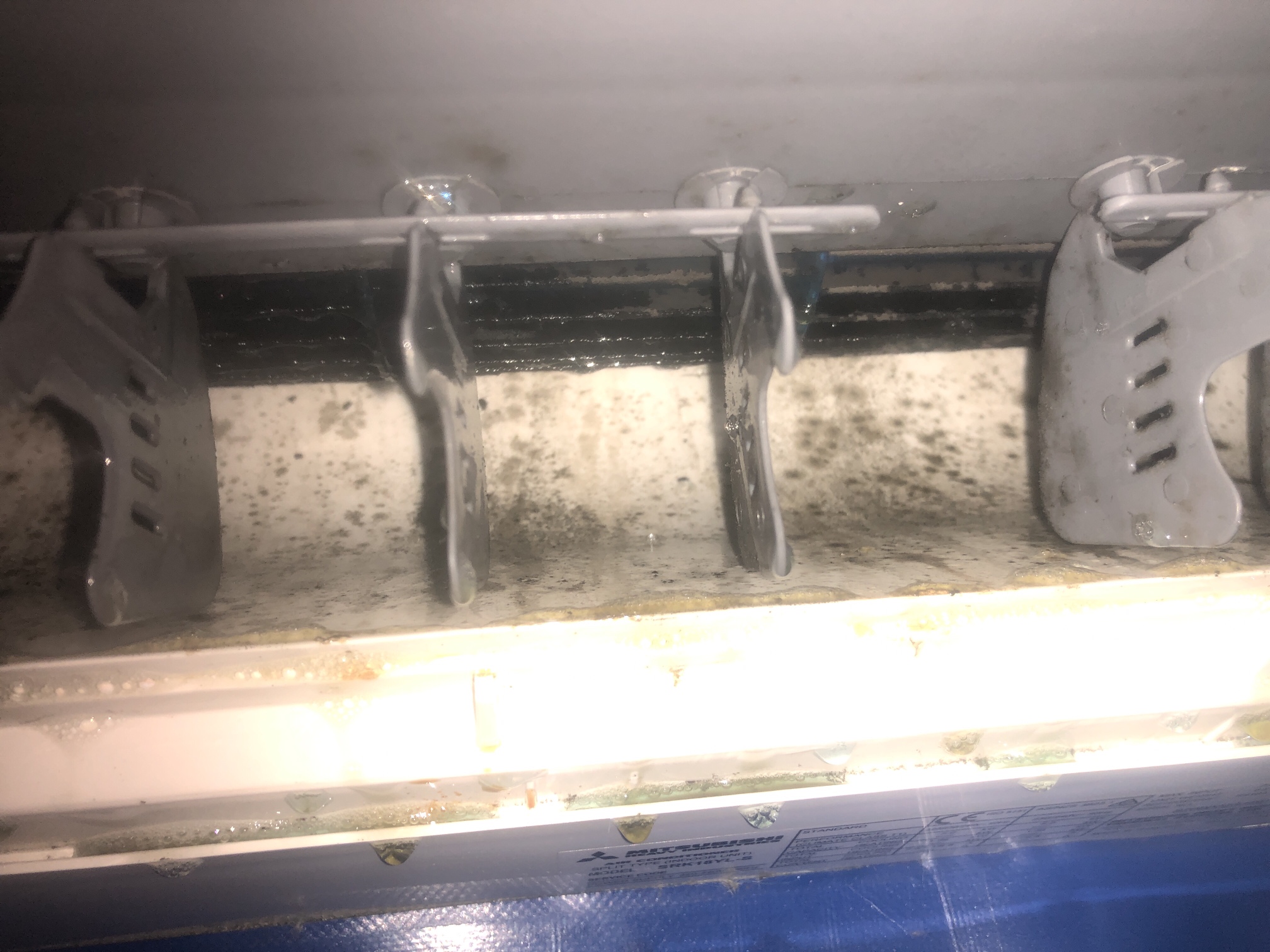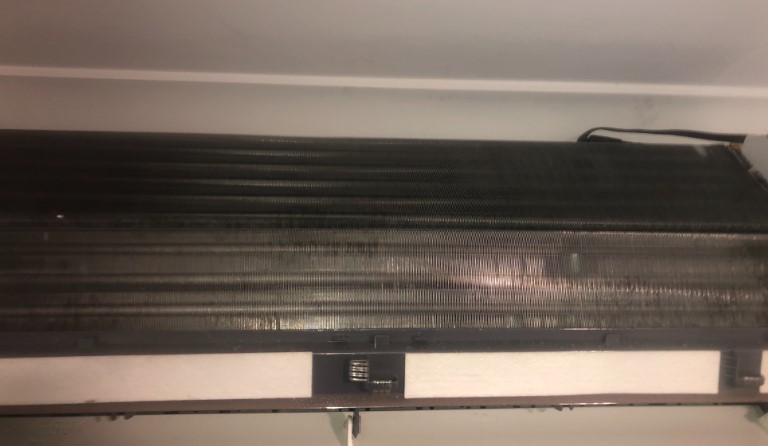The residential client has 3 Mitsubishi split system air conditioners that need servicing and cleaning.
Cleaning the Air Conditioners in South Mackay
The first task was to clean the indoor and outdoor air conditioner units. Over time a lot of grime had built up inside the systems. Because air conditioners pull in air from other rooms small fibres become entangled in the unit’s airflow pipes and the unit itself. When moisture and dust are in the air they will gather on the system fan blades. Eventually, this extra weight will impact the performance. When the fibres run through the coils and pipes this will also prevent the air conditioner from working at its optimum.
To clean the systems we use a combination of warm water and detergent and a vacuum cleaner. We first suck out any loose fibres and dust then we wash down all the fan blades and the housing. We remove all the dust filters and thoroughly clean them removing any debris that has built up. Additionally, clogged filters force your air conditioner to work harder to circulate, cool and heat the air, which raises the cost of operation. Thus, cleaning will help you save money as well.
Pressure testing the Air Conditioners
Once we have cleaned the air conditioners we test the pressure of the system. We pressurise the system with nitrogen to see if the pressure has dropped. If it has then this would suggest there is a leak in the air conditioner. Testing the system’s components—such as the condenser, evaporator, and connecting lines—helps ensure that they are in good condition and able to withstand the necessary pressure.
Servicing the Air Conditioners
On these air conditioners, we noticed that the pressure had dropped. This meant that the system would have to work harder to produce the desired temperature. We used dry nitrogen to purge any particles that had formed inside the coils. Once again we pressure tested the air conditioners and they were now running at the manufacturer’s prescribed levels.
How does dry nitrogen clean air conditioner coils?
Using dry nitrogen to clean air conditioner coils is a common practice to remove debris, dust, or moisture that might be affecting the system’s performance. Here’s a step-by-step explanation of how this process works:
- Preparation: First, the air conditioner is turned off and the power is disconnected to ensure safety. The coils, which are part of the evaporator or condenser unit, are then inspected.
- Dry Nitrogen Supply: Dry nitrogen is used because it’s an inert gas, meaning it won’t react with other substances or leave residues. The nitrogen used is also dry, which means it has no moisture, preventing potential corrosion or other issues.
- Pressurization: The dry nitrogen is pressurized and directed through a nozzle or hose onto the coils. This pressurization helps to dislodge and blow away any accumulated dust, dirt, or debris that might be on the coils.
- Cleaning Process: As the nitrogen flows over the coils, it lifts and pushes away contaminants. Since nitrogen is dry, it doesn’t add any moisture, which can be particularly useful in sensitive equipment where moisture could cause issues.
- Inspection and Reassembly: After the cleaning is done, the coils are inspected to ensure they are clear of debris. The air conditioner is then reassembled, and the power is restored.
- Testing: Finally, the air conditioner is turned back on and tested to make sure it’s operating efficiently and effectively.
Using dry nitrogen is especially useful in maintaining the integrity of the coils and preventing any potential problems related to moisture or chemical residues.




